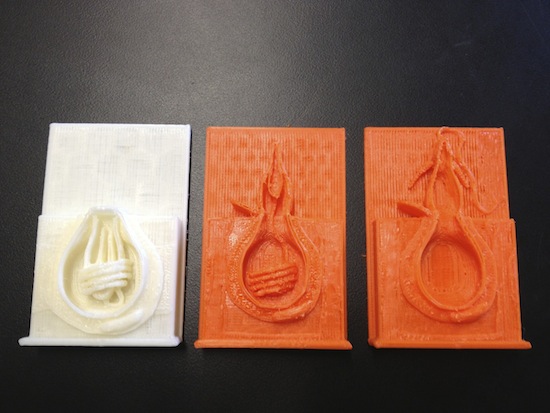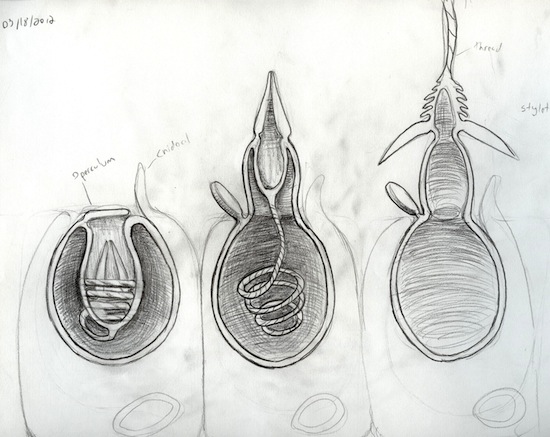If you have ever been stung by a jellyfish or coral you’ve already encountered one of these – a nematocyst. It is the stinging capsule found within specialized cells of Cnidaria. Nematocysts have poison filled harpoons that rapidly fire to attach to and incapacitate prey, or to deter predators.
This 3D model, available for download at Thingiverse if you would like to print it yourself, is an homage to anatomical relief models that probably adorned your doctors office and junior high science classroom. It shows the nematocyst in three stages of discharge. First, the inverted harpoon is packed within the capsule. The harpoon is inside-out at this point. Second, a stimulus has led the capsule to pressurize, swinging open the operculum (the trap door at the top), and begin everting the poison filled thread. As it extends, it turns right-sideout, exposing hooked barbs as it goes. Third, the thread is fully extended. At this point, it would be lodged in the flesh of whatever brushed up against it.
This model was designed by Daniel Newman, a certificate student in the Natural Science Illustration program at the Rhode Island School of Design, while doing an internship facilitated by Amy Bartlet Wright in my lab. His original concept sketches can be viewed above, along with the printed models.
Thanks to Stefan Siebert and Bryn Bliska.


